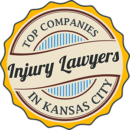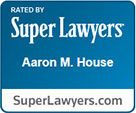Evidence is the foundation of all successful car wreck claims. To win at trial, a victim (called a “Plaintiff”) must prove that the other driver was negligent, or failed to use reasonable care, by a preponderance of the evidence (more likely than not). That is a much lower standard of proof than the beyond a reasonable doubt standard used in criminal cases. Attorneys help victims prove their cases, and they help to persuade jurors to award reasonable compensation for a person’s damages.
These damages usually include compensation for economic losses, such as medical bills, and noneconomic losses, such as pain and suffering. A Kansas City personal injury attorney might be able to obtain additional punitive damages, in some extreme cases, although the Missouri legislature is hard at work trying to minimize the availability of punitive damages to protect companies and to further harm injured people.
Basic Car Wreck Evidence
Medical bills, the police accident report, and testimony from the victim, the driver, and other witnesses usually form the basis of a negligence claim. In some cases, this evidence is enough to obtain fair compensation. But in many situations, more may be required.
Medical bills usually include diagnostic, treatment, and financial information. However, medical records do not always include information about the victim’s pain level, state of mind, and other intangible items. And, such notes are not always admissible in court.
Similarly, the police accident report is often incomplete. First responders are there to secure the scene and tend to injured victims. They are not there to collect evidence for a future negligence case. So, emergency responders often overlook some items, such as surveillance videos or statements from reluctant witnesses.
Finally, the victim’s own testimony is often very compelling. Such testimony can have a profound effect on jurors, but not all victims can withstand cross-examination from an insurance company’s lawyer. In catastrophic injury cases, such as wrongful death, this evidence is entirely unavailable.
Electronic Evidence
If traditional evidence is insufficient, a vehicle’s Event Data Recorder (EDR) may fill in the gaps. EDRs, which are much like black box flight data recorders in commercial jets, measure and store things mechanical details like:
- Vehicle speed,
- Steering angle,
- Engine RPM, and
- Brake application.
Evidence like this is very useful to victims/plaintiffs, especially when an expert accident reconstructionist is needed to assist with accident reconstruction.
Additionally, assuming the gadget was working properly, it is almost impossible for insurance company lawyers to exclude EDR information. Unlike eyewitnesses, computers are never biased and tend to be reliable.
Finally, tech-savvy jurors often respond very well to electronic evidence. Many of them think electronic evidence is more compelling than non-electronic evidence. And, most courtrooms have large-screen monitors and other tech tools to display such data.
However, EDR evidence is not always available in court. Unless attorneys quickly send spoliation letters, insurance companies might “accidentally” dispose of this evidence. It is usually inadmissible unless the judge signs a court order to the contrary. Missouri has strong vehicle information privacy laws.
Connect with an Assertive Attorney
If you have been injured due to another person’s negligence, call Aaron House at 816-875-4260 today for a free consultation.
Tags: car accident, personal injury
Related Posts: Understanding Liability After Vehicular Crashes Caused by the Rain Driving Safely in Construction Zones Assessing Liability After Sideswipe Collisions




